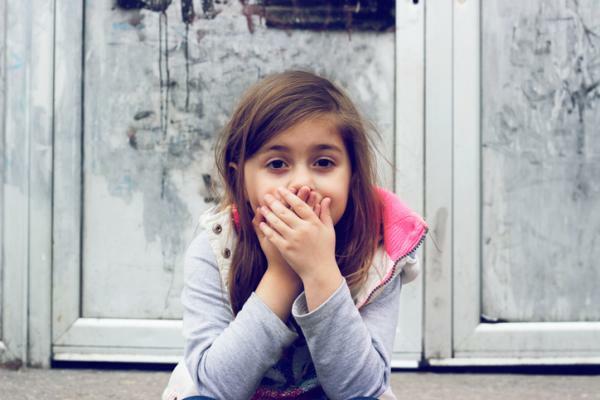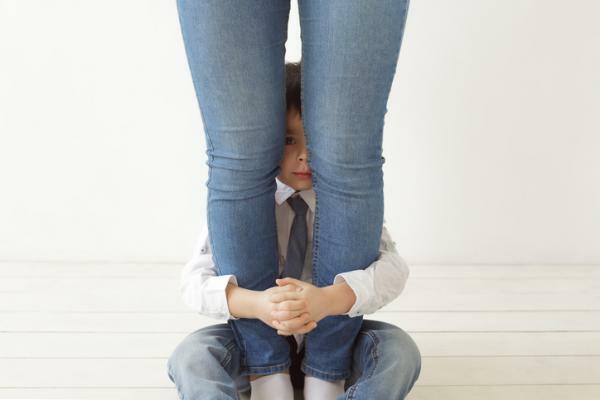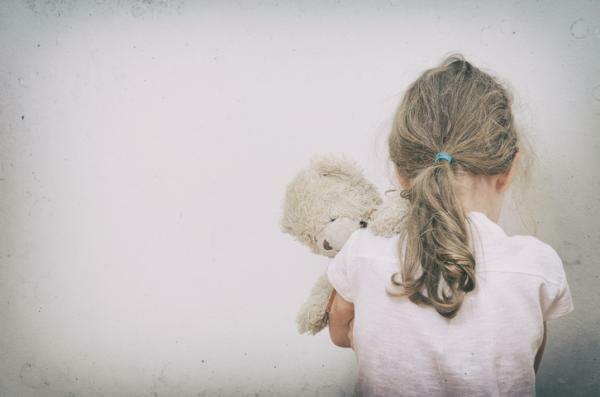
Selective mutism is a complex childhood anxiety disorder characterized by child's inability to speak and communicate effectively in social settings, such as the school. The pattern of mutism can vary greatly from one child to another. Some children never speak outside the home, others whisper, and some speak only to familiar people.
The child does not choose not to speak in all situations, but selects the situations and people with whom he communicates verbally. Children with selective mutism generally do not speak at school, which interferes with their academic, educational, and / or social performance. In this Psychology-Online article we explain the Infantile selective mutism, its causes and treatment.
Many of the traits of infantile selective mutism can be attributed to anxiety, these characteristics are the following:
- Temperamental inhibition: They are shy and cautious children in new and unfamiliar situations.
-
Symptoms of social anxiety: approximately 90% of children with selective mutism have social anxiety. They are uncomfortable when they are introduced to people or when they are the center of attention, they are perfectionists (fearful of make mistakes), they may have shy bladder syndrome and feeding problems (embarrassment of eating in front of others).
- They are social: Most children with selective mutism want and need friends. This differentiates selective mutism from other disorders, such as autism spectrum disorders. Most children with selective mutism have appropriate social skills, but others do not and need help developing them
- Physical appearance: Some children with selective mutism have a blank, frozen-looking face and stiff, clumsy body language with no eye contact when anxious. This is especially noticeable in younger children at the beginning of the school year or when they are approached by an unfamiliar person. The older the child, the less likely he will show a stiff and frozen body language. Also, the more comfortable a child is in an environment, the less likely they are to be anxious. For example, the young child who is comfortable and adapted to school, even though he does not speak, may appear relaxed, even though the silence is still present. One hypothesis is that the heightened sympathetic response causes muscle tension and vocal cord paralysis.
- Comorbid anxiety disorders: separation anxiety obsessive compulsive disorder, trichotillomania, generalized anxiety disorder, specific phobias, panic disorder.

No single cause of selective mutism has been identified in children and its causes are said to be multifactorial. Some of the following factors may coexist and play an important role in the development of selective mutism:
- Associated anxiety disorders: such as social phobia, separation anxiety, and obsessive compulsive disorder.
- Hereditary or genetic component.
- Environmental factors like living in an isolated area where there are few opportunities for social interaction, an environment where reinforce avoidance behaviors or environments in which fearful or fearful behaviors or behaviors are observed anxious
- Shy temperament and evenextreme shyness in children.
- Processing difficulties or delays: For some children with selective mutism, sensory processing difficulties are the underlying reason for their mutism. In larger and more crowded environments there are multiple stimuli, such as a classroom, the child feels some expectation of that environment, a sensory defense is produced and anxiety begins to increase, producing the mode of "freezing".

The main goal of therapy is to decrease anxiety levels, increase the bases of self-esteem and confidence in social interaction. With lower levels of anxiety, greater confidence, and the appropriate use of techniques, communication will improve as the child progresses in verbal and non-verbal communication. Treatments must be individualized, but most children are treated with a combination of several therapies. Some of these therapies are:
Behavioral therapy
Positive reinforcement and desensitization techniques They are behavioral treatments for children with selective mutism, since they reduce the pressure that the child feels when it comes to speaking. The emphasis should be on understanding the child and her anxiety. Introducing the child to social environments in a protected way, that is, without her feeling threatened, is the best way for her to gain confidence. For example: parents can take their child to school when there are few people around.
Small groups of children are a good option at first, and as the child builds confidence while speaking, more children, the teacher, etc. can be included in the group. Positive reinforcement for verbalization should be introduced only when it is expected to be helpful.
Play therapy, psychotherapy, and other psychological approaches
They can be effective if all pressure for verbalization is removed and the emphasis is on helping the child relax. Coping with silence in a non-threatening way is very important. These children are scared and the focus should be on helping them identify their level of fear in a given situation. Letting them see that you understand them and that you are there to help them takes a lot of pressure off them.
Cognitive behavioral therapy
Therapists trained in CBT They help children modify their behavior by helping them redirect their fears and worries into positive thoughts. Most children with selective mutism worry that others will hear their voice, that they will ask them questions about why they are not speaking, and that they will try to force them to speak.
This article is merely informative, in Psychology-Online we do not have the power to make a diagnosis or recommend a treatment. We invite you to go to a psychologist to treat your particular case.


